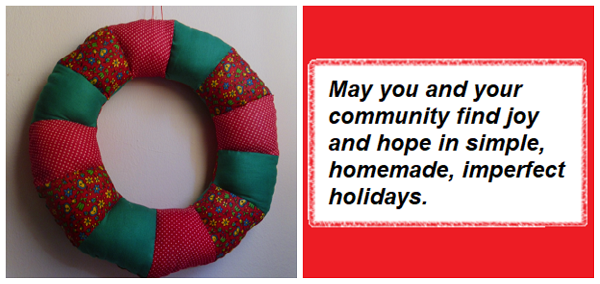| Back to Back Issues Page |
 |
|
Useful Community Plus December 10, 2020 |
Deep cultural and social differences divide the U.S. and many other nations into camps. But never mind that--sometimes the divisions are much closer to home.
Admittedly many of you live in quite homogenous communities, but others reading this need to understand more about bridging divides.
The divides might be related to newcomer-previous resident conflicts, a pro-development and an anti-development camp, disagreement on prioritizing cars or bicycles and pedestrians, friction about permitting tall buildings or limiting height, or conflicts between the "neighborhood neat and tidy" versus the "live and let live" people who don't want anyone telling them how many pets to have or whether to put their old cars up on blocks. Sometimes the conflicts really represent followers of rival leaders, and yes, sometimes a neighborhood is divided along the lines of religion or
politics.
If any of these resonate, we have compiled a variety of resource articles that offer differing perspectives for you to consider.
A retired therapist's take on why neighborhood conflict is stressful and how to approach it.
Article for homeowners' associations or co-ops about alternative conflict resolution, which is just a fancy term for techniques such as mediation when ordinary face-to-face meetings don't come up with an acceptable solution. This advice from 2007 is still valid.
This page allows you to search for mediators and learn about the mediation process.
An account of using listening conversations to bridge public policy divides in a rural setting.
A handbook of particular interest to communities where immigrants reside, but also helpful to others contemplating a community arts approach to cultural, racial, or ethnic differences.
A good handbook from the League of Minnesota Cities about conflict resolution.
Resource for U.S. communities where politics has created divisions. This one
doesn't pertain to many neighborhoods, but may be relevant at a citywide or regional level.
Looking for particularly timely topics on our website for right now, our eye fell on these: commercial district revitalization, racial equity and community development--again and still, climate change planning especially for those of you plagued by wildfires and hurricanes this year, and sprawl and public health. Of course, your list could be entirely different! Take some time with our sitemap in a holiday lull.
Here's a great interview with Portland State
scholar Jola Ajibade about "managed retreat" or just "retreat" in the face of increased flooding in coastal cities. She faces squarely what we who work in the field know about inequity in relocating relatively poor people away from their historic communities that were always flood-prone or have become so in light of climate change. Examples from Nigeria and the U.S. are cited in this "good read" from Yale School of the Environment.
We studied an interesting article about what is happening in Buffalo due to a loosening of some traditional zoning restrictions to allow the city’s mixed-use heritage to re-emerge. The piece also describes how the author thinks zero parking requirements are spurring redevelopment.
We love to hear about re-occupied vacant buildings and a flexible special use permit mechanism for allowing businesses that previously would have been prohibited outright.
Lastly, the Strong Towns organization points out the need to take advantage of excess capacity in water and sewer systems where it exists. This leads naturally to the need for coordination with planning commissions and their staff members to incentivize infill development in areas where capacity exists already instead of expanding the physical systems. The article proposes this approach as one answer to the staggering need for maintenance investments in these systems. We would call it one more urban sprawl solution.
We are quite excited about our new article about community mural projects. Often useful in kick starting renewal in small downtowns or forgotten neighborhoods, beautifying bare walls in stronger markets works as well. We barely scratched the surface, so future articles may tackle barn painting, graffiti, advertising painting, ghost signs, and more.
These answers to our website visitors' questions are new this month: 
You are set to receive the next monthly email in January, 2021. While you are in the holiday spirit, feel free to forward this email to a friend who is interested in community work. Your replies to this e-mail are always welcome.
|
| Back to Back Issues Page |


